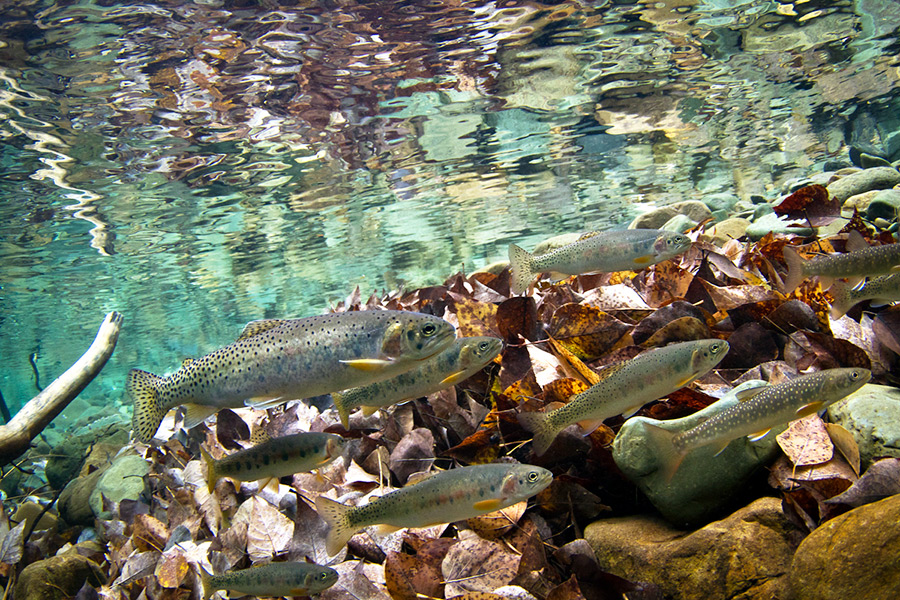Scientists Release First Assessment of Westslope Cutthroat in Glacier National Park
Study published by American Fisheries Society identifies genetically pure conservation populations
By Tristan Scott
Having completed the first genetic assessment of westslope cutthroat trout populations in Glacier National Park, fisheries biologists in Northwest Montana have fine-tuned their conservation compass to help guide management of the iconic native species.
A team of researchers led by Clint Muhlfeld, aquatic ecologist for the USGS Northern Rocky Mountains Science Center, recently published the park’s first comprehensive genetic assessment of westslope cutthroat trout inside the park’s boundaries, giving park managers a genetic inventory and providing baseline genetic status and distribution information that can be used for prioritizing management efforts to protect and restore the genetic integrity of westslope cutthroat trout populations in Glacier Park.
“This is the first assessment on westslope cutthroat trout throughout Glacier — a stronghold for genetic and life history diversity of the species — that will undoubtedly shape future management and conservation in Glacier and range-wide,” Muhlfeld said.
Cutthroat are equipped with genetic adaptations they’ve adopted over the course of millennia, and which vary from one neighboring tributary to the next. The pressure of hybridization compromises those genetic adaptations, weakening a population’s ability to reproduce, Muhlfeld explained.
Published last week in Transactions of the American Fisheries Society, the study notes that Glacier National Park and its surrounding waters contain some of the most ecologically and economically important westslope cutthroat trout populations remaining in western North America.
“Loss of these populations would damage the ecological integrity of Glacier National Park and the subspecies as a whole, since these populations likely contain unique genetic and behavioral adaptations representing important evolutionary potential that is critical for the subspecies’ survival,” the report states.
Chris Downs, the fisheries biologist for Glacier National Park, said the assessment would help inform a new blueprint for fish management that is in the works, and which for the next two decades will serve as a guiding document for native trout conservation.
According to Downs, the genetic assessment will help park managers prioritize conservation actions as they develop their fish management plan.
Glacier’s lakes and streams are home to a suite of nonnative species, particularly as invasive lake trout have radiated out of Flathead Lake, colonized the lakes and out-competed native species like cutthroat and bull trout.
Historically one of the last best strongholds for native cutthroat and bull trout, Glacier Park has seen its wild populations decimated, reducing Montana’s state fish to imperiled icons and pushing the species toward the brink of extinction.
To gain a better understanding of the park’s remaining genetically pure populations, for the past five years Muhlfeld and his team have scoured the park’s three river basins that are historic ranges to native westslope cutthroat – the Columbia, Missouri and South Saskatchewan – dispatching angers with fly rods into the park’s remote corners to cull genetic samples.
Of the 115 populations sampled in the three river basins, 34 contained hybrid samples, while 36 conservation populations were identified, 19 of which were tagged as having medium-low to medium-high risk of hybridization. Twelve populations were at high risk of hybridization, while five populations were at low risk, all of them located upstream of fish passage barriers.
“Protecting the genetic integrity of native Westslope Cutthroat Trout is a high priority for conservation and management programs in the park and rangewide,” the study states. “An understanding of the westslope cutthroat trout’ s genetic status and distribution in Glacier National Park is needed to inform management decisions, provide recreational opportunities, and conserve the evolutionary heritage of this native trout for future generations.”